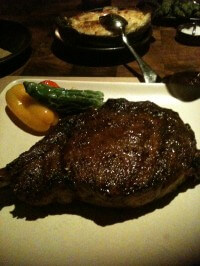 The next time you say to your bloated self, Did I really need to eat that 26-ounce Cajun ribeye or that triple bacon cheeseburger, gently remind yourself that you did it because it’s in your nature. Specifically, you can blame the Maillard reaction.
The next time you say to your bloated self, Did I really need to eat that 26-ounce Cajun ribeye or that triple bacon cheeseburger, gently remind yourself that you did it because it’s in your nature. Specifically, you can blame the Maillard reaction.
As the Washington Post notes,
What’s so special about bacon and steak that, for most people, it trumps the growing pile of scientific data on meat’s detrimental health effects? The answer, according to scientists, lies in meat’s unique mixture of fat and umami (more about this taste later), spiced up in a process called the Maillard reaction—the browning that happens when we cook a piece of meat … the marriage between carbohydrates and amino acids that occurs in a slightly moist, hot environment and that produces aromas so delightful that they “make us go weak at the knees,” says Adam Drewnowski, director of the Nutritional Sciences Program at the University of Washington. More than 1,000 chemical compounds are responsible for the scents of meats, and many are created by this reaction. Some smell fruity, other musty, while still others have the scent of nuts, mildew, marshmallow and even crushed bugs. When taken together, they create the enticing aroma of a backyard barbecue or a stove-top saute.
This handy reminder comes in the wake of meat that was grown in a lab at Maastricht University. Something about it didn’t seem right and it has to do with the Maillard reaction on real beef (and apparently much of what we think of as meat taste is in fact aroma).